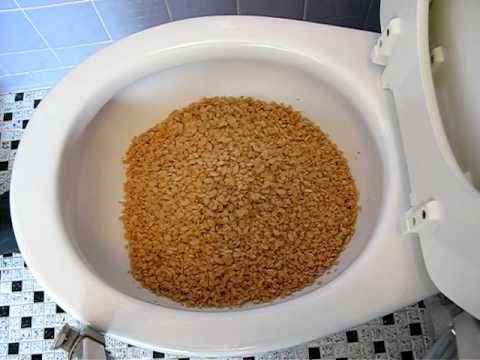Is it Allowed to Flush Food Down the Toilet?
Is it Allowed to Flush Food Down the Toilet?
Blog Article
Any individual maintains his or her own ideas involving Flushing Food Down the Toilet?.

Intro
Lots of people are commonly faced with the issue of what to do with food waste, specifically when it involves leftovers or scraps. One typical inquiry that develops is whether it's okay to flush food down the toilet. In this write-up, we'll explore the reasons that individuals may think about flushing food, the effects of doing so, and different approaches for proper disposal.
Reasons that individuals might consider flushing food
Lack of recognition
Some people might not understand the possible injury triggered by purging food down the toilet. They might wrongly believe that it's a harmless practice.
Benefit
Flushing food down the bathroom may seem like a quick and simple service to disposing of undesirable scraps, especially when there's no nearby trash bin available.
Laziness
In some cases, individuals may simply select to flush food out of large idleness, without considering the consequences of their actions.
Consequences of flushing food down the toilet
Ecological effect
Food waste that winds up in rivers can contribute to contamination and damage water environments. Furthermore, the water made use of to flush food can stress water resources.
Plumbing concerns
Purging food can bring about clogged up pipes and drains pipes, causing expensive plumbing fixings and aggravations.
Kinds of food that must not be flushed
Fibrous foods
Foods with coarse structures such as celery or corn husks can get entangled in pipes and cause obstructions.
Starchy foods
Starchy foods like pasta and rice can absorb water and swell, leading to clogs in pipelines.
Oils and fats
Greasy foods like bacon or food preparation oils ought to never be purged down the commode as they can solidify and create clogs.
Proper disposal techniques for food waste
Making use of a garbage disposal
For homes geared up with waste disposal unit, food scraps can be ground up and flushed with the pipes system. Nonetheless, not all foods appropriate for disposal in this fashion.
Recycling
Certain food product packaging products can be recycled, reducing waste and decreasing ecological impact.
Composting
Composting is a green method to get rid of food waste. Organic materials can be composted and made use of to enrich dirt for horticulture.
The importance of appropriate waste management
Minimizing ecological damage
Correct waste administration techniques, such as composting and recycling, help lessen air pollution and preserve natural resources for future generations.
Protecting plumbing systems
By preventing the method of flushing food down the commode, homeowners can avoid expensive plumbing repair work and keep the integrity of their plumbing systems.
Conclusion
To conclude, while it might be alluring to purge food down the toilet for convenience, it is essential to comprehend the potential consequences of this action. By adopting correct waste management techniques and getting rid of food waste responsibly, people can contribute to healthier pipes systems and a cleaner atmosphere for all.
FLUSH FOOD DOWN THE TOILET?
FLUSHING FOOD CAN CAUSE BLOCKED DRAINS IN YOUR HOME
All of the plumbing fixtures in your home are connected to the same sewer pipe outside of your home. This outdoor sewer pipe is responsible for transporting all the wastewater from your home to the Council sewer mains. Even small pieces of food that go down the kitchen sink can cause problems for your sewer. It should therefore be obvious that flushing larger bits of food, such as meat, risks a clog in either the toilet itself or the sewer pipes. Flushing greasy food is even more problematic because oil coagulates when it cools, coating the interior lining of your pipes.
THE TOILET IS NOT A BIN
Food isn’t the only thing that people shouldn’t be flushing down the toilet. People use the toilet to dispose of all kinds of things such as tampons, makeup wipes, dental floss, kitty litter and even underwear. Water goes to great lengths to educate residents about the high costs and stress placed on wastewater treatment systems simply from people flushing the wrong stuff down the toilet. It costs taxpayers millions of dollars each year, and homeowners thousands in blocked drain repairs.
FLUSHING FOOD IS A WASTE OF WATER
Flushing food is a waste of our most precious resource - water. In June this year Level 1 water restrictions were introduced to protect water supply from drought conditions. Much of New South Wales continues to be affected by prolonged drought with recent figures revealing up to 97 per cent of the state remains in drought. Depending on whether you have a single or dual flush toilet, every single flush uses between five and 11 litres of water. In the current climate this is a huge amount of water to be wasting on flushing food that should be placed in the bin (or better yet, the compost).
https://www.jabplumbingsolutions.com.au/blog/can-you-flush-food-down-the-toilet

As a fervent reader on Think Twice Before Flushing Food Down Your Toilet, I thought sharing that excerpt was important. In case you enjoyed our blog post please be sure to pass it around. Thank you for your time invested reading it.
Call Today Report this page